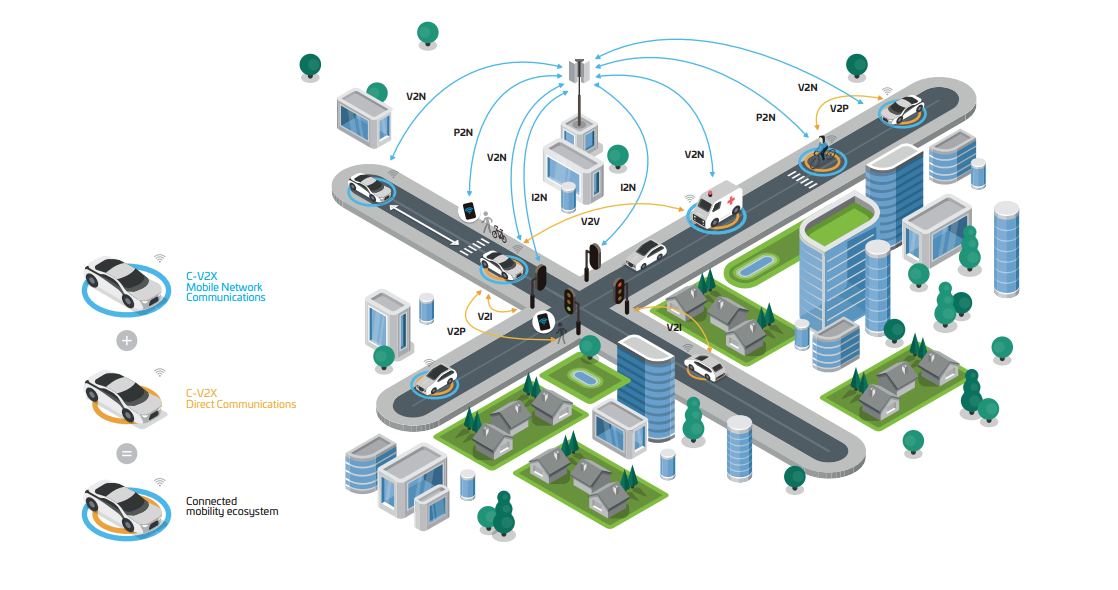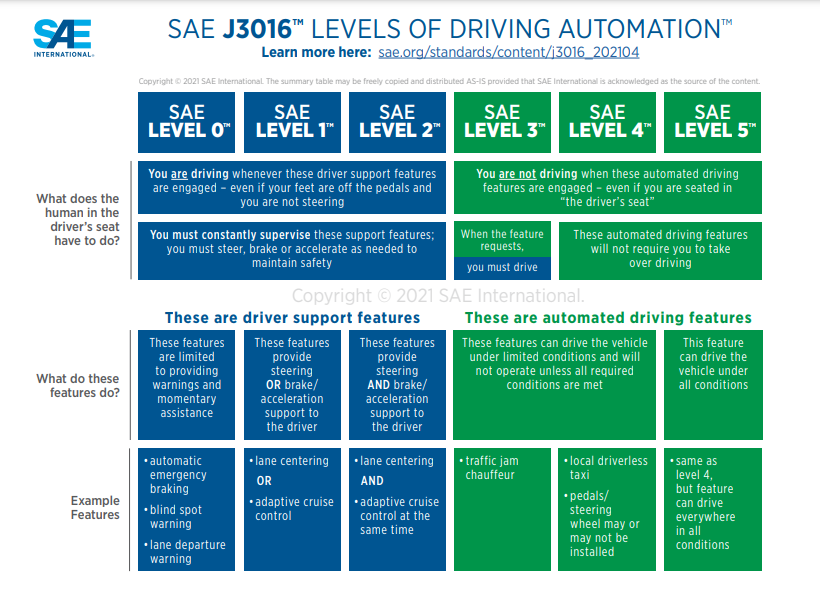Connected and Automated Vehicles
- INDOT
- Emerging Mobility
- Current: Connected and Automated Vehicles
Connected and automated vehicles(CAVs) utilize cutting-edge technology to mitigate human error leading to improved safety and mobility of the transportation network. Human error (speed, impairment, distraction) plays a leading role in the number of serious injuries and fatalities on Indiana roadways. CAV technologies have the potential to significantly reduce the severity and occurrence of crashes leading to better outcomes for Hoosiers.
Connected Vehicles
Connected vehicles require a driver at all times. These vehicles are equipped with communications equipment that send and receive information from sources outside of the vehicle to those within. Vehicles can communicate with other vehicles(vehicle to vehicle or V2V), the intelligent transportation infrastructure(vehicle to infrastructure or V2I) and eventually the entire connected network, think pedestrians with mobile devices(vehicle to everything or V2X). These networks can provide drivers with imminent crash information, traffic delays, weather conditions and roadway warnings allowing for safer more efficient travel.
(Click to enlarge)
Automated Vehicles
Automated vehicles are equipped with technologies and systems that can complete some or all of the driving task, making the driver potentially optional . Many new vehicles are equipped with Advanced Driver Assist Systems(ADAS). From adaptive cruise control, and lane keep assistance to automatic emergency braking, these systems automate some of the driving tasks.
Fully autonomous vehicles are truly driverless and require no human interaction to complete the driving task. There are currently not commercially available autonomous vehicles and Indiana law does not allow for the operation of these vehicles on our roads.
(Click to enlarge)
Current CAV Research and Programs
INDOT regional and national CAV affiliations
- Smart Belt Coalition (Member)
- Center for Freight & Logistics Efficiency with Electrified & Automated Trucking (FLEET)
Policy
CAV
- Indiana Code on Truck Platooning, IC 9-21-22
- House Bill 1015- Worksite speed control pilot program. 2023
- House Bill 1341 – Autonomous Vehicles. 2018. Introduced AV Regulatory Framework for Indiana failed to pass by deadline. No legislation since has come close to passage. Indiana currently has no AV laws on the books.


